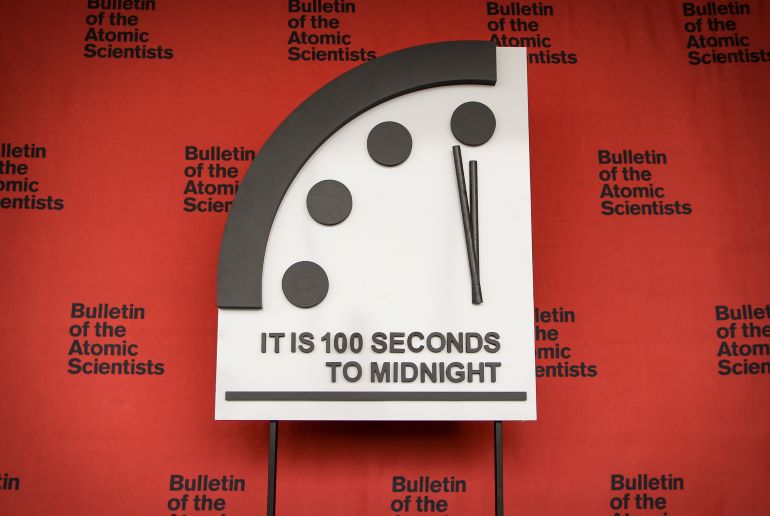100 seconds until humanity is doomed!
For the past 75 years, the symbolic Doomsday Clock(opens in new window) has been a huge influence on science, politics, global policy, pop culture, art and entertainment. Most recently, even Prime Minister of the United Kingdom Boris Johnson referred to the clock in his speech at the 2021 United Nations Climate Change Conference. Every year around this time, the iconic clock gets plenty of attention.
Tick-tock, tick-tock
Basically, the Doomsday Clock warns us about how close we are to annihilating our world with dangerous man-made technologies. The hands move depending on whether events drive humans closer to or further from the apocalypse. A timeline(opens in new window) includes all the clock changes from year 1. “It’s an imperfect metaphor,” Michael E. Mann, one of the world’s most influential climate scientists, told ‘CNN’(opens in new window). He added that it “remains an important rhetorical device that reminds us, year after year, of the tenuousness of our current existence on this planet.” American scientists who had worked on the first nuclear weapons created the Doomsday Clock in 1947. They were worried about a nuclear disaster and wanted to caution the world against the use of atomic weapons. It’s set every year in January by United States-based Bulletin of the Atomic Scientists’ Science and Security Board (SASB), consisting of nuclear risk, climate change and disruptive technologies experts, together with its Board of Sponsors that includes 11 Nobel laureates. The Bulletin houses the physical clock at its offices in Chicago.
Is midnight upon us?
For the past 2 years, it had been stuck at 100 seconds to midnight. The hands have never before been this close to midnight. In a virtual news conference on Thursday 20 January, the clock was set at 100 seconds again. The farthest it’s been from midnight? In 1991 with the end of the Cold War, when the clock hand was set to 17 minutes to midnight. “The Doomsday Clock continues to hover dangerously, reminding us about how much work is needed to be done to ensure a safer and healthier planet,” commented Bulletin president and CEO Dr Rachel Bronson in a press release(opens in new window). “We must continue to push the hands of the Clock away from midnight.” SASB co-chair Sharon Squassoni added: “One hundred seconds to midnight reflects the Board’s judgment that we are stuck in a perilous moment—one that brings neither stability nor security. Positive developments in 2021 failed to counteract negative, long-term trends.” SASB member Dr Asha M. George stated: “We can no longer afford to focus all of our efforts on other perils to the exclusion of the biological threat. If we do, diseases and the lives they take will push the second hand on the Doomsday Clock closer to midnight.” With the clock ticking precariously close to midnight because of nuclear risk, climate change, disruptive technologies and other modern-day threats, let’s think about what we can do to turn back time.



